-
Posts
12446 -
Joined
-
Last visited
-
Days Won
555
Content Type
Profiles
Forums
Events
Everything posted by Fiery
-
We've added the requested information to the Display / GPU page in the latest beta version of AIDA64 Extreme available at: https://www.aida64.com/downloads/latesta64xebeta After upgrading to this new version, make sure to restart Windows to finalize the upgrade. Let me know how it works. We're planning to add it to the SensorPanel and other modules as well, but first we need to figure out how to implement it in a useful way.
-
AIDA64 does support remote connections through WiFi via the RemoteSensor module, but I don't think you'd have a http client on your device Let us know more about the protocol we'd need to use to talk to the mentioned ESP8266 MCU.
-
I'm not sure how that issue affects AIDA64. Can you please tell us more about the readings in AIDA64? Do we need to fix anything?
-
You can save the Desktop Gadget settings by backing up the AIDA64.INI file that you can find in the installation folder of AIDA64 (e.g. C:\Program Files (x86)\FinalWire\AIDA64 Extreme). As for slow updates, make sure to check if the Desktop Gadget update frequency is properly set in AIDA64 / main menu / File / Preferences / Hardware Monitoring / Update Frequency.
-
AIDA64 reports the cameras as the standard Android Camera API manages them. AFAIK all dual-cameras are handled as a single camera by Android.
-
System availability indicates the percentage of a day that your system is up (online, in use). So for example, if you use your computer between 8am and 4pm every day, including weekends and holidays, your system availability will be 33% (8 hours out of 24 hours). If you however use your computer only between 8pm and 10pm on Saturdays and Sundays only, then your system availability will be 2%.
- 1 reply
-
- 1
-

-

Search/Filter General/Label tab when adding new sensors
Fiery replied to one2three's topic in Brainstorming
We've implemented the requested feature in the latest AIDA64 beta update: https://www.aida64.com/downloads/latesta64xebeta Let me know how it works -
First, you need to configure the right resolution for your display (let me know if you need guidelines on how to do that). When you've done that, the LCD preview will show you the same layout that you can see on your phone. However, when the LCD preview layout only has the top-left corner populated, it is normal that it looks tiny on the mobile device. In which case you need to use larger font sizes to assure proper legibility on the smaller screen of the mobile device.
-
Not yet. M.2 SSD temperature measurement works fine already, but not when those drives are part of a NVMe RAID array. We'll work on it in the upcoming weeks.
-
It's not the basic idea of power efficiency that we find problemous. The issue is with the AXi firmware that produces incorrect (unrealistic) overall power output values. And if you base your efficiency calculation on an incorrect value, the end result will also be incorrect.
-

Whats the time interval used to calculate CPU utilization?
Fiery replied to Ruuwa's topic in Hardware monitoring
We'll decrease the minimum update rate to 0.1 sec (from the current 1 sec) in the next AIDA64 beta update that is rolling out later today.- 7 replies
-
- 1
-

-
- time frame
- cpu utilization
-
(and 1 more)
Tagged with:
-

Whats the time interval used to calculate CPU utilization?
Fiery replied to Ruuwa's topic in Hardware monitoring
I don't think that's necessary, since you can easily estimate the update frequency by looking at the frequency of values. So e.g. if you have 5 updates with the same HH:MM:SS value, then the actual update rate is 200 millisec.- 7 replies
-
- time frame
- cpu utilization
-
(and 1 more)
Tagged with:
-

laptop reboots when I open AIDA 64
Fiery replied to Elio's topic in Benchmarking, system performance
What laptop do you have? Does it reboot while AIDA64 is showing its splash (welcome) screen? If so, then what's the last message you can see displayed on the bottom of the splash screen? -

New LCD device support: Samsung SPF Digital Photo Frames
Fiery replied to Fiery's topic in Hardware monitoring
No, we haven't changed anything about it. But we've already seen overheating issues about Samsung SPF devices. So in case the ambient temperature got hotter around your device, that may cause the hangs after a period of time. -
We've found something... Do you have a video card that supports iCX?
-

How many times should Aida64 find the same USB devices???!!!
Fiery replied to SverreMunthe's topic in General Discussion
That's definitely not normal. Do you mean that while you have AIDA64 running, Windows 10 pops up message boxes about finding new USB hubs every few seconds? If yes, then do you have all Windows 10 updates applied, and have you tried to restart Windows? Also, do you have an external USB device connected to your PC that's not a mouse or keyboard? Printer, external card reader, flash drive, external HDD/SSD? -
Such issues can happen when Windows gets mixed up after upgrading AIDA64 from an old version to a new one -- or when one of the drivers get updated by Windows Update or manually by the user. In most cases restarting Windows fixes everything. That's why we always recommend AIDA64 users to restart their system after updating AIDA64 to a new release.
-
36:3 is normal for a configuration with 100 MHz BCLK and DDR4-2400 RAM (running at 1200 MHz). Regards, Fiery
-

Android 7 all cores on Snapdragon 810 (Sony Xperia Z5)
Fiery replied to Dave86's topic in Android Forum
It must be due to a system pecularity that is specific your particular device. We'll try to get a similar device to check it out. On our existing devices, including a Snapdragon 810 based Nexus 6P (running Android O DP2 right now), we can see no such issues. On our Nexus 6P all 8 cores are properly measured. Before the Android O update, it used to work properly with Android 7.x and Android 6.x as well. -
Have you tried to add some items to your LCD layout in AIDA64 / main menu / File / Preferences / Hardware Monitoring / LCD / LCD Items? The blue box that informs you about the preview resolution will only disappear when you have at least one item on your LCD layout.
- 103 replies
-
- RemoteSensor
- Safari
-
(and 8 more)
Tagged with:
-

Whats the time interval used to calculate CPU utilization?
Fiery replied to Ruuwa's topic in Hardware monitoring
You're right, the minimum update rate of the CPU utilization measurement in the log files is 1 second. Do you want us to improve that rate to make the measurements more accurate on your system?- 7 replies
-
- time frame
- cpu utilization
-
(and 1 more)
Tagged with:
-
Please verify if you used the same account to buy the IAP (the "Remove Ads" in-app product) than what you've used to install AIDA64 from the Play Store. We've already seen issues about using multiple Google accounts. Also, make sure to install all updates from the Play Store, and reboot your device. In some cases that alone helps to get Google Play Services to sync its caches with the information stored on Google's own servers. Please note that we don't manage IAP or any kind of purchases. Everything is handled and managed by Google Play Services, and so when such a mixup happens, it's not because there's a bug in our app, but due to a mixup in Google Play Services. We would love to help you in such cases, but we have basically zero insight into how IAP is handled by Google, and we have the same zero control over managing the purchases :-(
-
Only the Arc Gauge supports that, but that is only available with the RemoteSensor and Logitech Arx modules.
-
I see, but we still do not want to go down that path. Users complain already about not properly 1-second update rate for time on the SensorPanel and LCD, imagine how upset they would be if the animation wasn't fluid and/or wasn't consistent (ie. irregular pace in updates).

